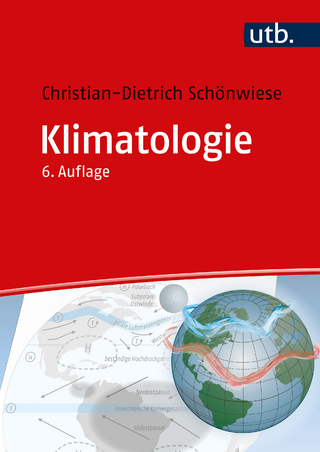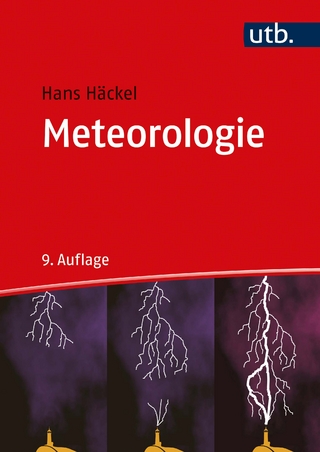
Exploring our Evolving Planet
Wiley-Blackwell (an imprint of John Wiley & Sons Ltd) (Verlag)
978-1-4051-5426-0 (ISBN)
- Titel ist leider vergriffen;
keine Neuauflage - Artikel merken
Draft table of contents:.
Chapter 1: Overview of an evolving planet.
A. Introduction, using 2004 Indian Ocean earthquake and tsunami as an illustration of geophysical processes.
B. An overview of Earth's layered structure.
C. The age and history of the earth.
D. Transfer of heat as "the geological lifeblood of planets.".
E. Earth's unique style of heat transfer: plate tectonics.
F. Significance of plate tectonics for the origin of life and its survival, climate, resource generation and concentration.
G. Natural hazards: "civilization exists by geological consent.".
Demonstrations: finding what s in a mystery box by different techniques, effects of shaking and liquefaction on structures.
.
Chapter 2: Shape and size of the earth.
A. Sphere: Earth's size, mass, density as function of radius.
B. Differentiated planet.
C. Rotating Ellipsoid: Ellipticity, moment of inertia of the earth.
D. Three-dimensional variations: Geoid, density anomalies.
E. Magnetic field and magnetosheath..
Demonstrations: measuring acceleration of gravity with pendulum or ball drop, moment of inertia, conservation of angular momentum, pressure..
.
Chapter 3: Earth structure from seismology.
A. Seismometers and seismograms.
B. Seismic wave propagation.
C. Snell's law.
D. Reflection and refraction.
E. Body and surface waves, normal modes.
F. Deriving layered velocity structures from travel times and waveforms.
G. Structure of crust, mantle, core.
H. Differences between continents and oceans.
I. Implications of three-dimensional variations..
Demonstrations: wave properties - slinky, gong, dominoes, diffraction, etc..
Chapter 4: Composition of the earth.
A. Review of Minerals.
B. Review of Rocks - focus on silicates.
C. Metamorphism and rock deformation.
D. Rock cycle and plate tectonics.
E. Magma composition and viscosity.
F. The causes of melting and the role of water in the rock cycle.
G. Composition of ocean: ocean lithosphere genesis and history.
H. Composition of continents: orogenesis, accretion, creation of granite.
I. Elastic Moduli as functions of P,T,X: mineral stability, phase diagrams.
J. Going deeper: Analogues, equations of state, high-pressure mineral physics.
K. Phase diagrams and mantle velocity discontinuities.
L. Composition of the upper mantle, transition zone, and lower mantle.
M. Composition of the inner and outer core: relation between them.
N. Anisotropy: Texture and Flow.
Demonstrations: fractional crystallization with juice, pressure melting of ice, volcano shapes from viscosity with chocolate syrup & jam.
.
Chapter 5: Earth as a heat engine.
A. Conductive heat equation, solutions.
B. Geotherms.
C. Radioactivity & heat production.
D. Using radioactivity to determine the age of the earth.
E. Convection, Rayleigh number.
F. Viscosity and rock flow.
G. Core convection and generation of the magnetic field.
H. Convection in the oceans and atmosphere: climate change.
I. Role of thermal boundary layers.
J. Formation of the lithosphere as cold strong boundary layer.
K. Importance of core-mantle boundary on mantle convection.
L. Surface radiation and interaction with the atmosphere..
Demonstrations: convection, age dating with coin flips.
Chapter 6: Plate tectonics.
A. Relation to thermal evolution and convection.
B. Roles of continents and oceans in plate tectonics.
C. Global plate motions and space geodesy (GPS, VLBI, SLR, SAR).
D. Marine magnetic anomalies: age of ocean seafloor.
E. Seafloor topography and satellite gravity.
F. Continental paleomagnetism and early plate motions.
G. Historical geology: formation and history of the continents.
H. Earthquake focal mechanisms and the seismic cycle.
I. The earthquake prediction challenge.
J. Plate boundaries and kinematics (Euler vectors).
K. Mechanics of plate tectonics, thermal evolution of lithosphere, ridges, subduction zones.
L. Plate dynamics: slab pull, ridge push, slab suction.
M. The hotspot/plume controversy.
N. The onset of subduction, break-up of supercontinents, and the Wilson cycle.
O. Plate tectonics and mineral resources..
Demonstrations: paper cutouts for transform faults, Euler vectors, relative and absolute plate motions, inexpensive handheld GPS receiver.
.
Chapter 7: Earth in the solar system.
A. The Big Bang, baryogenesis, nucleosythesis, galaxies, and the shape of the universe.
B. The life cycle of stars.
C. Determining the age of the Earth.
D. Formation of the Solar System.
E. Meteorites and implications for earth composition.
F. Formation of Earth and the other planets.
G. Inner (terrestrial) versus outer planets.
H. Planets as evolving systems.
I. Different planetary styles of convection.
J. Relation of lithospheric thickness to other planets, role of size (Moon, Mars, Venus).
K. Evolution of atmosphere, relation to plate tectonics, role in surface temperature (greenhouse) and survival (or not) of life.
L. Unresolved issues for other planets.
M. The uniqueness or non-uniqueness of Earth in supporting advanced life..
Demonstrations: surface area/volume effects on cooling rate using ice, Drake equation for extraterrestrial life
| Erscheinungsdatum | 13.12.2017 |
|---|---|
| Verlagsort | Chicester |
| Sprache | englisch |
| Maße | 216 x 279 mm |
| Themenwelt | Naturwissenschaften ► Geowissenschaften ► Allgemeines / Lexika |
| Naturwissenschaften ► Geowissenschaften ► Geophysik | |
| ISBN-10 | 1-4051-5426-8 / 1405154268 |
| ISBN-13 | 978-1-4051-5426-0 / 9781405154260 |
| Zustand | Neuware |
| Haben Sie eine Frage zum Produkt? |
aus dem Bereich


